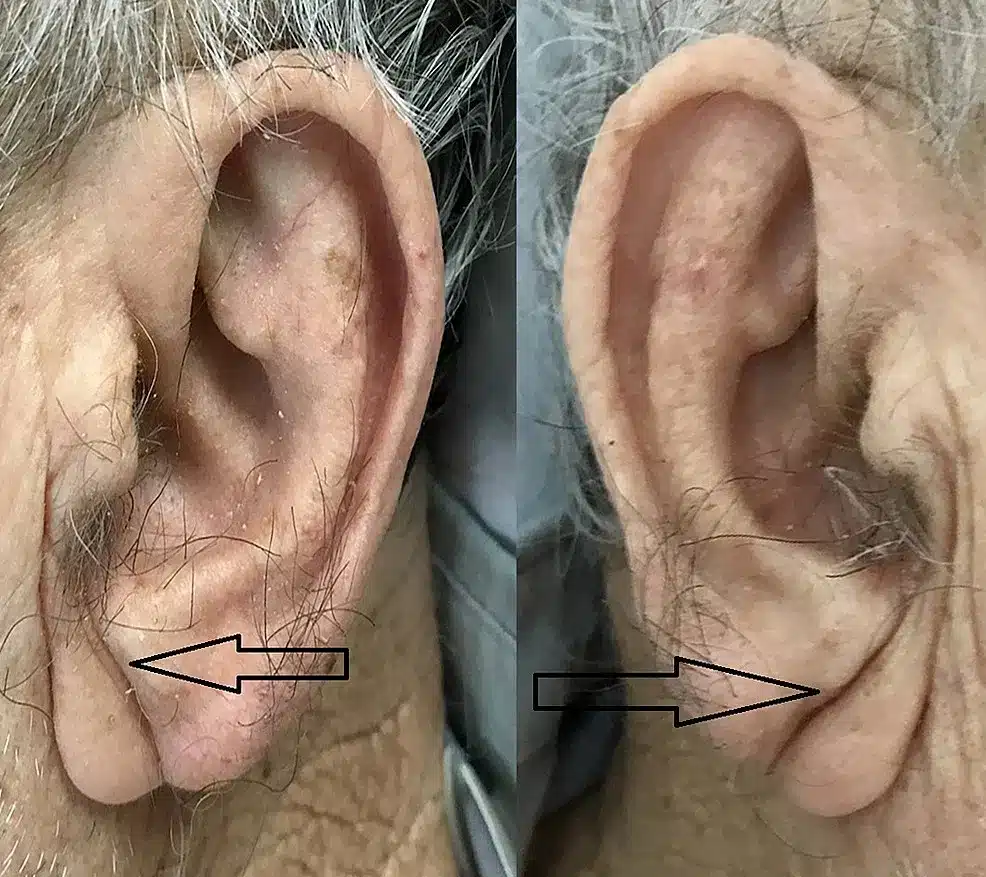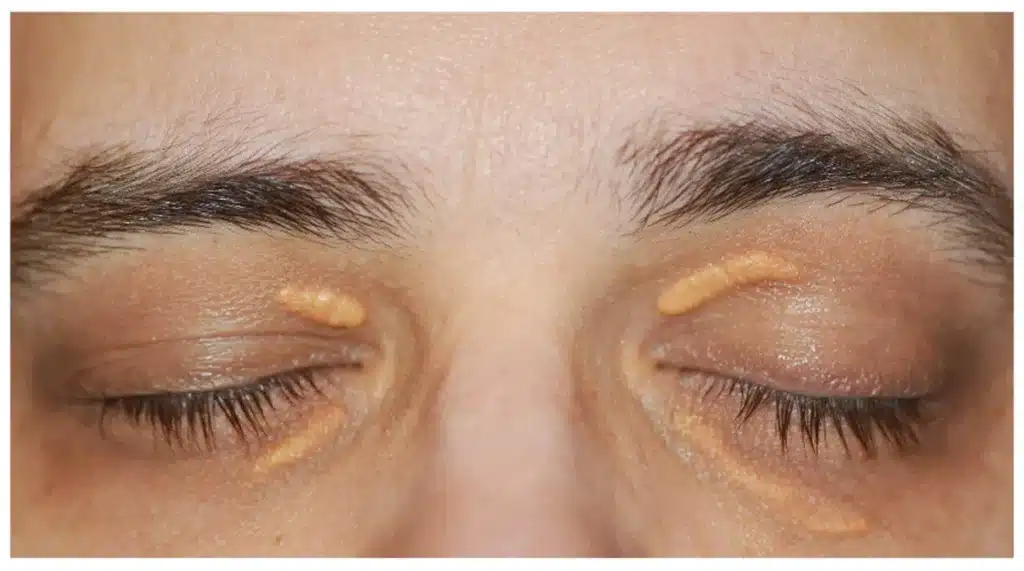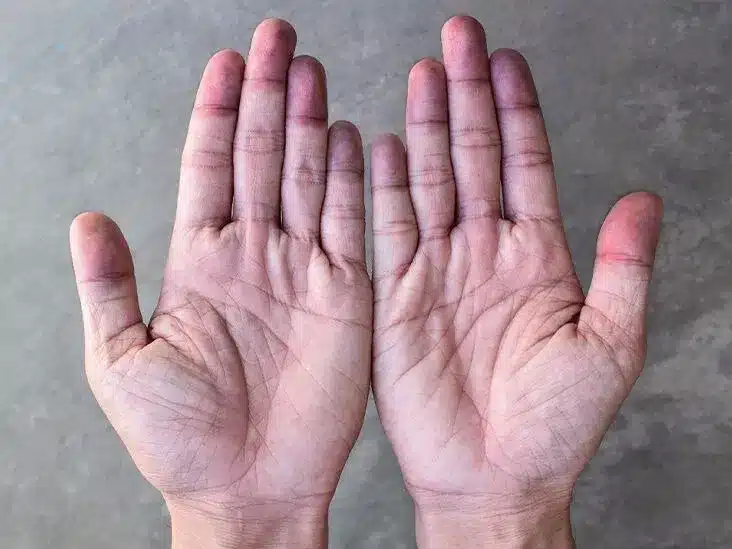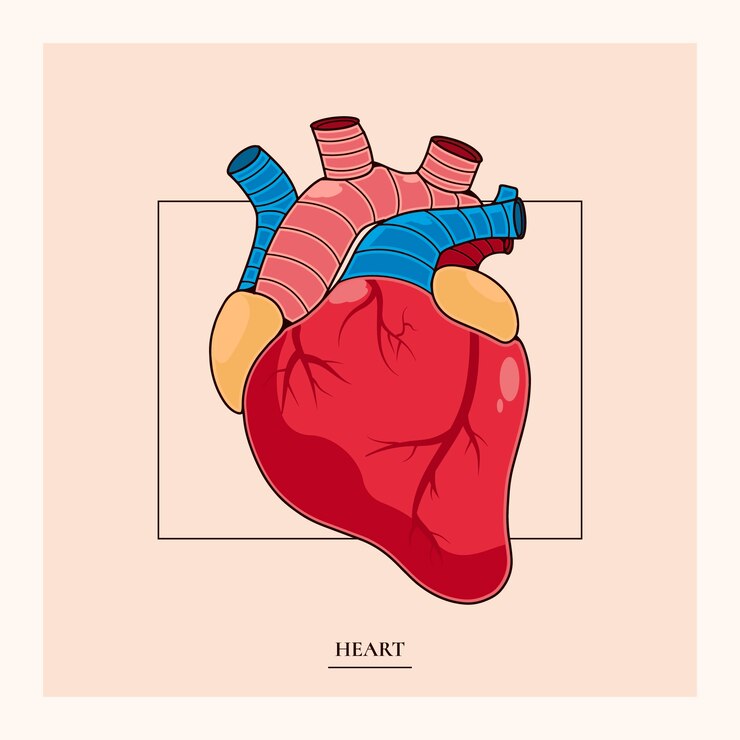Heart disease remains the leading cause of death worldwide, underscoring the critical importance of recognizing early warning signs. Many individuals may be unaware of the subtle symptoms that signal potential issues with heart health. By understanding these indicators, you can take proactive measures to seek professional guidance and implement lifestyle modifications that may help prevent serious cardiac events.
Below, we explore five clinical signs that may suggest your heart is not functioning optimally. Each of these signs serves as an important reminder to pay close attention to your body’s signals, particularly if you are at risk or if these symptoms present before you reach your forties. While the presence of one or more of these signs does not guarantee a heart problem, they should prompt a consultation with a healthcare provider for a comprehensive evaluation.
1. The “Frank Sign”: A Diagonal Ear Crease

Understanding the Frank Sign
The “Frank sign” is characterized by a diagonal crease running from the upper to the lower part of the earlobe. This physical feature has been identified in several studies as a potential marker for coronary artery disease. Although not every person with this crease will experience arterial blockages, research suggests that approximately 70 percent of individuals displaying this sign may have significant coronary artery issues.
Clinical Implications
The association between the Frank sign and coronary artery disease is thought to be linked to the process of aging and the accumulation of vascular damage over time. The crease may indicate changes in the elastic tissue of the ear, which, according to some hypotheses, might correlate with the state of the cardiovascular system. Notably, the appearance of this crease before the age of 40 may warrant closer attention from a medical professional, as it could be an early warning sign of underlying vascular problems.
Recommendations for Action
If you notice a prominent diagonal crease on your earlobe, especially if you have additional risk factors for heart disease (such as a family history, high cholesterol, or hypertension), it is advisable to discuss this observation with your physician. Early evaluation can lead to timely diagnostic testing, including blood lipid profiles and imaging studies, which may help detect early signs of coronary artery disease.
2. Loss of Leg Hair: A Potential Indicator of Peripheral Arterial Disease
The Link Between Hair Loss and Vascular Health
Loss of hair on the legs can be more than just a cosmetic concern—it may be an indicator of peripheral arterial disease (PAD). PAD occurs when plaque builds up in the arteries supplying blood to the legs, leading to reduced circulation. This decrease in blood flow can result in diminished oxygen and nutrient delivery, which is essential for hair growth.
Understanding Peripheral Arterial Disease
Peripheral arterial disease is a common circulatory problem, particularly in individuals with risk factors such as smoking, diabetes, and high cholesterol. In addition to hair loss, PAD can cause leg pain during walking (claudication), numbness, and even sores that do not heal. While hair loss alone is not diagnostic of PAD, it may be one of the early physical signs that prompt further investigation.
Clinical Considerations and Next Steps
If you notice a significant reduction in hair growth on your legs, particularly if accompanied by other symptoms like leg pain or cramping, it is important to seek a thorough vascular assessment. Your healthcare provider may recommend tests such as an ankle-brachial index (ABI), ultrasound, or other imaging studies to evaluate the condition of your peripheral arteries. Early diagnosis and management of PAD can help prevent more serious complications, including heart attack and stroke.
3. Xanthelasma: Yellow Patches Around the Eyes

Identifying Xanthelasma
Xanthelasma refers to the yellowish deposits that appear around the eyelids, especially on the upper lids. These deposits are composed primarily of cholesterol and lipids. Their presence can be a visible marker of elevated cholesterol levels in the body, which is a significant risk factor for heart disease.
The Connection to Cholesterol and Heart Disease
High levels of cholesterol in the bloodstream can lead to the formation of plaque in the arteries—a process known as atherosclerosis. Over time, this buildup can narrow the arteries, increasing the risk of heart attack and stroke. Xanthelasma may be an external manifestation of these internal processes. Although not everyone with xanthelasma will have heart disease, the association is strong enough that its presence should prompt further evaluation of your lipid profile and overall cardiovascular health.
Professional Advice and Management
If you notice yellowish patches around your eyes, it is crucial to consult with your healthcare provider. A simple blood test can measure your cholesterol levels and help determine whether lifestyle changes or medical interventions are necessary. Managing cholesterol effectively through diet, exercise, and, if needed, medication, can reduce your risk of developing heart disease and improve overall health.
4. Arcus Senilis (The Senile Arch): An Early Warning in Younger Individuals
What Is Arcus Senilis?
Arcus senilis is a term used to describe a gray or white arc visible along the outer edge of the cornea. In older individuals, this phenomenon is a common age-related change and is generally considered benign. However, its appearance in younger individuals—typically under the age of 50—can be a cause for concern.
The Implications of a Premature Senile Arch
When arcus senilis appears in younger individuals, it may indicate the presence of severe dyslipidemia, a condition characterized by abnormal levels of lipids in the blood. Dyslipidemia is a major risk factor for the development of atherosclerosis and other cardiovascular diseases. The premature appearance of this corneal deposit suggests that the body’s lipid metabolism may be disrupted, potentially increasing the risk of heart disease at an earlier age.
Recommended Actions and Testing
If you notice signs of arcus senilis and are younger than expected to have this feature, it is important to have a comprehensive lipid panel performed by your doctor. Early identification of dyslipidemia can lead to prompt treatment, which may include dietary modifications, exercise, and medication to control cholesterol levels. Proactive management can help mitigate the risk of developing more serious cardiovascular complications later in life.
5. Cyanosis: Bluish Discoloration of the Skin

Understanding Cyanosis
Cyanosis is characterized by a bluish or purplish discoloration of the skin and mucous membranes. It occurs when there is insufficient oxygen in the blood—a condition known as hypoxemia. Cyanosis can be observed in various parts of the body, including the lips, fingers, and sometimes the overall skin tone.
Causes and Clinical Significance
The presence of cyanosis is a serious clinical sign that may indicate underlying heart or lung conditions. In the context of cardiovascular health, cyanosis could signal that the heart is not effectively pumping oxygenated blood to the tissues, a situation that may be seen in conditions such as congestive heart failure or congenital heart defects. In some cases, cyanosis may be localized (peripheral cyanosis), but when it affects the central body (central cyanosis), it is often a sign of a critical medical condition requiring urgent attention.
Urgency and Medical Evaluation
Given the potential severity of cyanosis, it is imperative to seek immediate medical advice if you or someone else exhibits this symptom. Your doctor will likely perform a thorough physical examination, blood tests, and imaging studies such as an echocardiogram or chest X-ray to determine the underlying cause. Prompt intervention is essential to address the root issue, be it a cardiac, pulmonary, or vascular problem, and to prevent further deterioration of health.
Taking Charge of Your Heart Health
The Importance of Early Detection
Recognizing these physical signs early can be a game-changer when it comes to preventing serious cardiovascular events. Heart disease is often a silent killer, with symptoms that may be subtle or easily overlooked until a major event, such as a heart attack, occurs. By familiarizing yourself with these indicators—whether it’s a diagonal crease on your earlobe, loss of leg hair, yellow patches around the eyes, an early senile arch, or the presence of cyanosis—you empower yourself to take preventive measures.
Regular Check-Ups and Preventive Measures
One of the most effective strategies for safeguarding your heart health is to maintain regular check-ups with your healthcare provider. Routine screenings, including blood pressure monitoring, cholesterol testing, and assessments for peripheral arterial disease, can help detect problems early. Additionally, lifestyle modifications such as adopting a heart-healthy diet, engaging in regular physical activity, avoiding tobacco, and managing stress are essential components of a comprehensive heart health strategy.
Working With Your Healthcare Team
It is also important to have open and honest communication with your healthcare team. If you notice any of these warning signs, document your observations and share them during your next medical appointment. Your doctor can provide a tailored approach to testing and treatment, taking into account your unique risk factors and health history. In some cases, additional tests such as an electrocardiogram (ECG), stress testing, or advanced imaging may be recommended to get a clearer picture of your cardiovascular health.
Understanding Risk Factors
Beyond the physical signs discussed, many individuals face additional risk factors that can contribute to heart disease. These include:
-
Family History: Genetics play a significant role in your predisposition to heart disease. If close relatives have had heart problems, you may be at higher risk.
-
Lifestyle Choices: Diet, exercise, smoking, and alcohol consumption all affect heart health. A sedentary lifestyle or poor nutritional choices can accelerate the onset of cardiovascular issues.
-
Chronic Conditions: Conditions such as diabetes, hypertension, and obesity increase the likelihood of developing heart disease.
-
Stress: Chronic stress can have a profound impact on your cardiovascular system, contributing to elevated blood pressure and other risk factors.
Taking a holistic approach to heart health means considering all these elements and working collaboratively with your healthcare provider to develop a prevention or management plan that fits your lifestyle.
Conclusion: A Proactive Approach to Heart Health
Heart disease continues to be the world’s leading cause of death, making it imperative to recognize and act upon early warning signs. By understanding the significance of the Frank sign, loss of leg hair, xanthelasma, premature arcus senilis, and cyanosis, you equip yourself with the knowledge needed to take proactive steps toward safeguarding your heart.
Early detection and intervention can make a critical difference in preventing serious cardiovascular events. By maintaining regular medical check-ups, embracing a heart-healthy lifestyle, and staying informed about the potential signs of heart disease, you can take charge of your health and reduce your risk of complications. Remember, while these physical indicators are important, they are just one part of a larger picture. A comprehensive approach that includes lifestyle modifications, routine screening, and open communication with your healthcare team is key to achieving long-term heart health.
If you or someone you know experiences any of these symptoms, do not hesitate to consult with a medical professional. The sooner potential issues are identified and addressed, the better the outcome can be for preventing life-threatening complications. Your heart is the engine of your body—treat it with the care and attention it deserves.
By being vigilant and proactive, you can ensure that you remain one step ahead of heart disease. Stay informed, maintain a healthy lifestyle, and never underestimate the importance of regular medical evaluations. Your health is your most valuable asset, and taking the necessary precautions today can lead to a longer, healthier tomorrow.
Note: If you experience any concerning symptoms, please seek immediate medical advice. Early intervention is crucial in managing cardiovascular risk factors and preventing serious health complications.

Lila Hart is a dedicated Digital Archivist and Research Specialist with a keen eye for preserving and curating meaningful content. At TheArchivists, she specializes in organizing and managing digital archives, ensuring that valuable stories and historical moments are accessible for generations to come.
Lila earned her degree in History and Archival Studies from the University of Edinburgh, where she cultivated her passion for documenting the past and preserving cultural heritage. Her expertise lies in combining traditional archival techniques with modern digital tools, allowing her to create comprehensive and engaging collections that resonate with audiences worldwide.
At TheArchivists, Lila is known for her meticulous attention to detail and her ability to uncover hidden gems within extensive archives. Her work is praised for its depth, authenticity, and contribution to the preservation of knowledge in the digital age.
Driven by a commitment to preserving stories that matter, Lila is passionate about exploring the intersection of history and technology. Her goal is to ensure that every piece of content she handles reflects the richness of human experiences and remains a source of inspiration for years to come.
